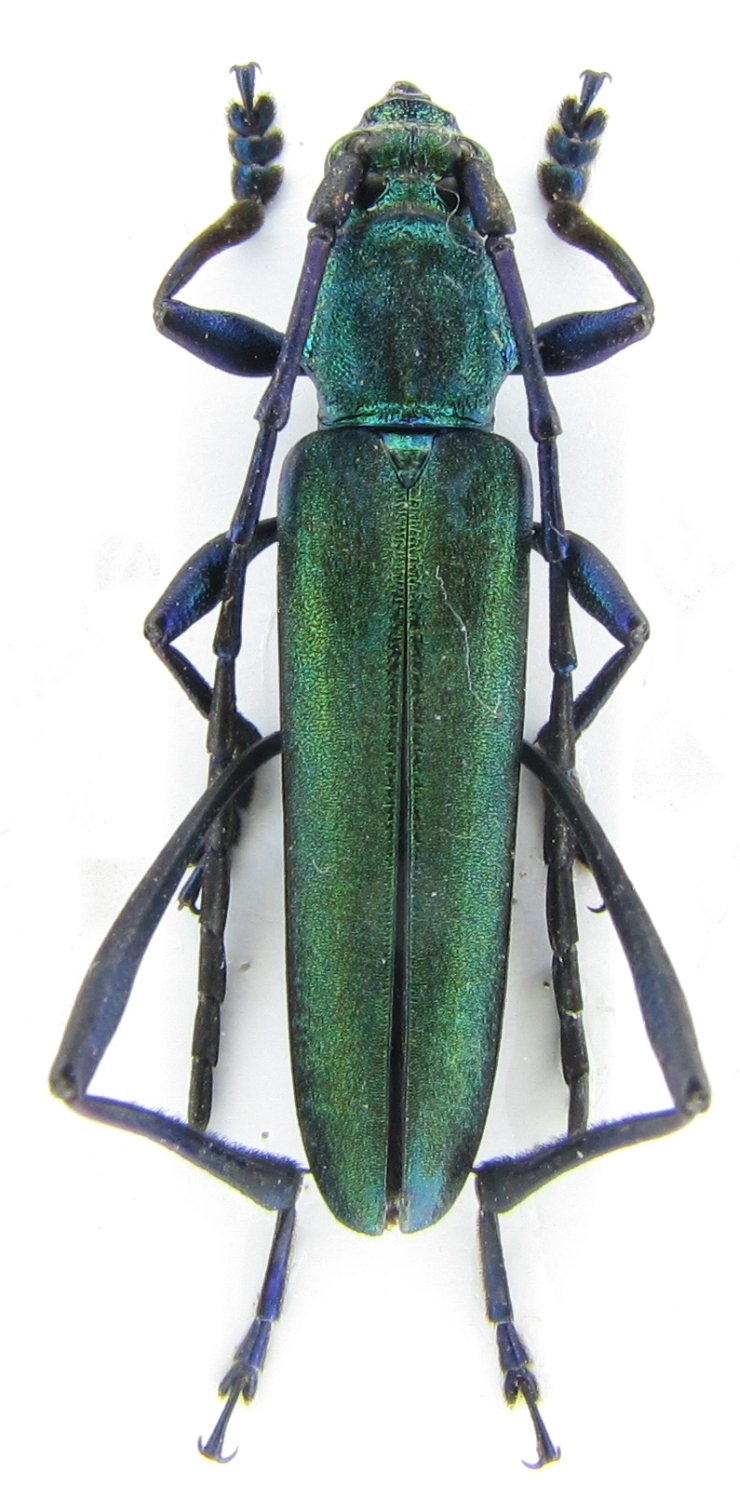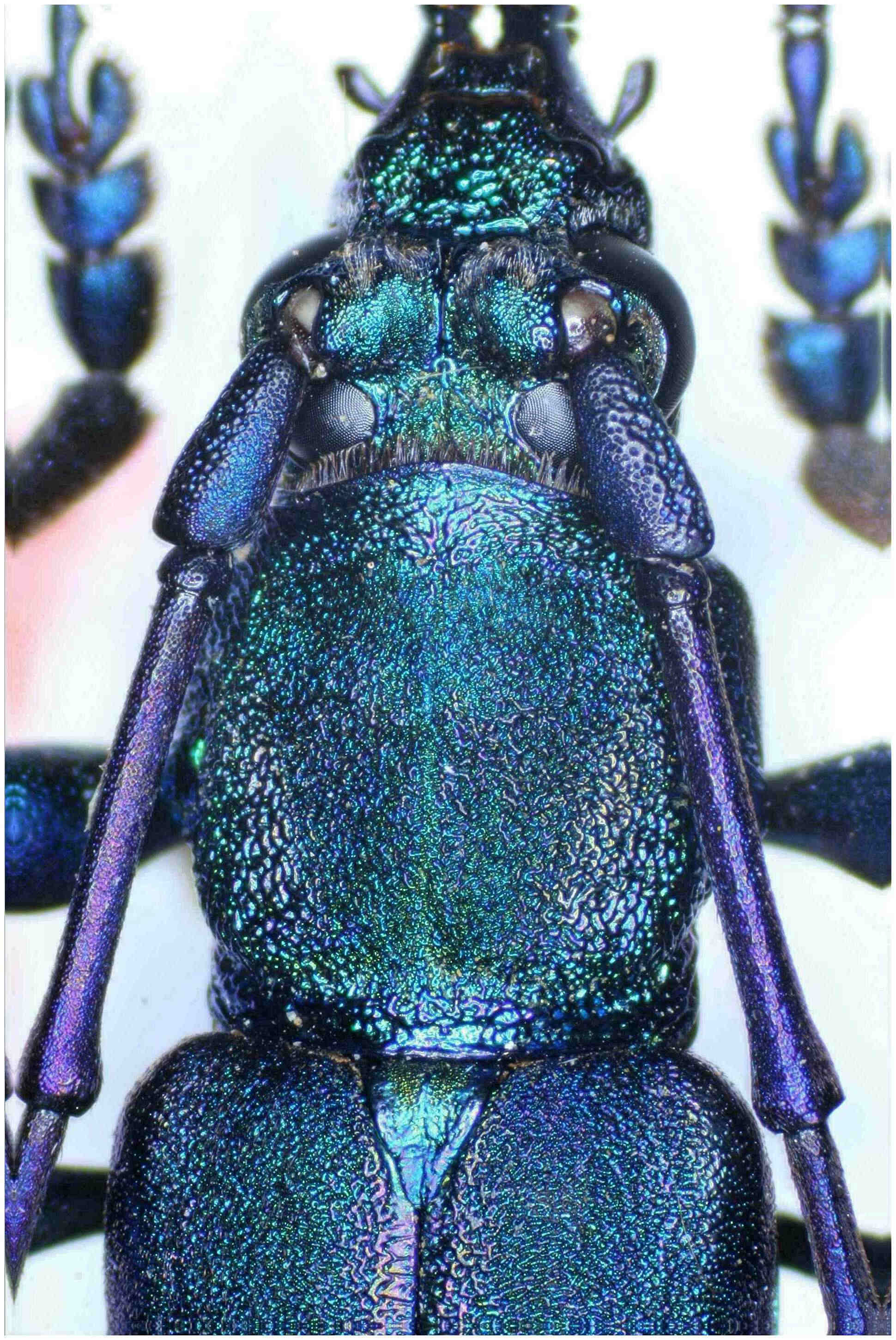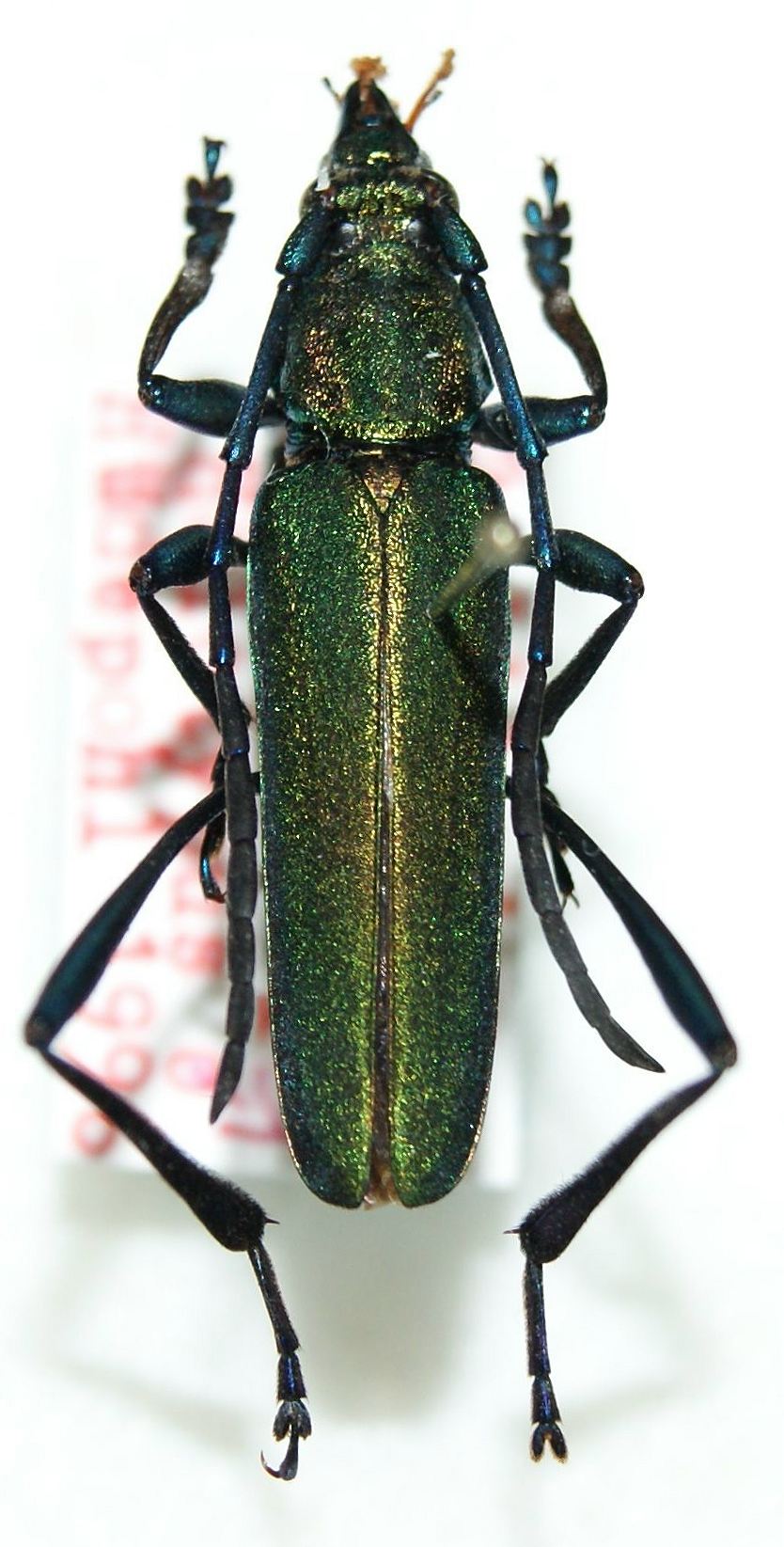| T O P I C R E V I E W |
| Vitali |
Posted - 04/06/2011 : 12:49:05

Resembles Chelidonium unonotaticolle Hüdepohl, although the central pronotal spot does not distinctly narrows backwards.
"Cameron Highlands", Malaysia. 23 mm.
It was on the same cardboard with Ch. circumsplendens, so probably 2 species from the same paper  |
| 15 L A T E S T R E P L I E S (Newest First) |
| Andre |
Posted - 26/04/2014 : 10:08:58
Sexual dimorphismus is possible...... I must check the PT`s in the next time.....is interesting. Might be Dan have male and female.....
The Abb. in the description from Hüdepohl, 1998 is a female, but the PT!
Hmmmm...either Hüdepohl has confused the sex or the HT has been swapped with a PT  |
| Francesco |
Posted - 26/04/2014 : 09:45:39
And the description was provided on the male (though the holotype is female)... das klappt!
According to me, it may be another case of sexual dimorphism. |
| Andre |
Posted - 26/04/2014 : 08:59:09
The HT is a female.....and the PT is a male |
| Francesco |
Posted - 26/04/2014 : 08:52:21
hmmm... the holotype also shows more golden pronotal sides and scutellum.
Is it only a colour variation?
The antennal length seems to be different... |
| Andre |
Posted - 26/04/2014 : 07:53:40
Hallo Dan and Vitali....sorry I forgot the replay of this post.
The spec. in the middle is a PT of P. unonotaticolle. Right the HT.
Hmmmm......the PT is without sutural stripe, but it is difficult... the determination on the picture is just not safe.
Sorry for the bad picture.

420.17 KB |
| Vitali |
Posted - 24/07/2013 : 13:07:30
Thank you, Andre, for the photos.
I can see differences with my beetle in both aspects mentioned by Dan and in the shape of the pronotal base.
Puzzling. |
| dryobius |
Posted - 24/07/2013 : 12:30:34
I strongly disagree with the determination of this species as Pseudochelidonium unonotaticolle.
P. unonotaticolle has a very thin, bright green sutural stripe from the scutellum to elytral apex. It has a distinct pronotal marking. The surface of the elytra appears to have a different texture.
I have seen about 4 or 5 specimens of P. unonotaticolle, only from Sabah, and they all look like the type. |
| Andre |
Posted - 21/07/2013 : 21:21:23

494.92 KB
Hier das Pronotum eines männlichen PT. |
| Andre |
Posted - 21/07/2013 : 20:53:00

223.81 KB
Hier der HT von Pseudochelidonium unonotaticolle Hüdepohl, 1998.
Ob es nötig war für dieses Taxon eine eigene Gattung anzulegen bleibt fraglich.
Laut Originalbeschreibung und -beschriftung ist der HT ein Männchen. Es handelt sich aber in Wirklichkeit um ein Weibchen! |
| Francesco |
Posted - 24/10/2011 : 12:47:57
Last but not least, Vives, Bentanachs & Chew Kea Foo (2006) created for this species the monobasic genus Pseudochelidonium. |
| Vitali |
Posted - 10/06/2011 : 10:37:30
Yes, the front 2/3 of lateral margins seem straight, not rounded. So, the front 2/3 of pronotum form a sort of trapezoid, although you are right, it is not easy to see because of antennae position and I have to tilt the beetle a little to see margins.
I think it should be Ch. unonotaticolle. I can see the only difference in the shape of a pronotal dark spot. It does not narrow that distinctly backwards, but this is not probably important. |
| Francesco |
Posted - 10/06/2011 : 08:06:03
Yes, you are right.
Here he wrote: "gerade nach vorne verlaufenden Seitenrand", that is: "the lateral side, which straightly goes ahead" (+/-)
My "parallel-sides" is too "interpretative"... 
But, this character is present or not in your specimen? |
| Vitali |
Posted - 09/06/2011 : 22:20:05
Thank you again.
In principle this fits well. I can see it with a small correction. I would say that it is Ch. unonotaticolle if the sides of pronotum are straight before the side bumps, but it is not if the sides have to be parallel. In fact the sides diverge backwards from the front edge to the side bumps.
Isn't "gerade" just straight? |
| Francesco |
Posted - 09/06/2011 : 22:00:03
Thank you Vitali! I completely missed it!
Hüdepohl writes that this species differs from the congeners with dark pronotal spot in its prothorax with "short lateral teeth" and with "parallel sides before them" (= anteriorly).
Unfortunately, the position of the antennae of this specimens does not help a lot... |
| Vitali |
Posted - 09/06/2011 : 21:49:22
Dear Francesco. Isn't it some sort of mistake?
There is a long comparative diagnosis of Ch. unonotaticolle with Ch. herteli, gahani, punctigerum, bryanti... etc in page 225 of Huedepohl, 1998.
My problem is that my German is insufficient to understand the most important first two sentences. Namely, which characteristics belongs to which species. By the way, there is also a good hint concerning my previous posting about Ch. bryanti and other species with two dark spots in pronotum. |


